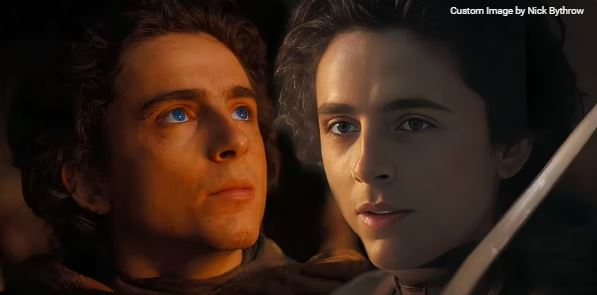VFX artists have explained why Dune: Part Two’s sandworm scene is so much better than House of the Dragon’s dragon riding scenes, revealing the major distinctions between the two. Both the Denis Villeneuve-directed movie and the fantasy TV series include heavy use of effects in order to show their characters riding large, fictional creatures. While House of the Dragon’s cast constantly boards their dragons for flight and fighting, Dune includes a single sandworm scene that impresses with its true to life effects.
Now, Corridor Crew have reacted to both Dune: Part Two’s sandworm scene and House of the Dragon’s dragon riding scenes in VFX Artists React Episode 150. Starting at 13:06, hosts Clint, Jordan, and Niko discuss the lack of realistic quality in the TV series’ dragon riding, despite the use of a mechanical system called the Bull to make the shots look real. They contrast it with the sci-fi movie’s sandworm scene, complimenting how it uses gravity and weight to better reflect the reality of riding such a massive creature.
In addition to dragon flight, the crew also contrasts the dust clouds in the sandworm sequence to House of the Dragon season 1, episode 9, when Rhaenys’ dragon Meleys breaks through the floor, scattering dust and people everywhere. They explain how the lighting isn’t realistic to the level of dust kicked up, but concede it was likely due to a lack of knowing what the final product would look like when it was originally shot on a bluescreen. Check out the video and what the Corridor Crew had to say below:
Clint : Anyone riding a dragon always looks funny to me.
Jordan : It’s tough. And this is what’s so crazy about it. All those standalone shots of the dragon itself, and all the fire effects look really, really, really, really good. The minute you are trying to integrate a person – an actor – riding one of these things, you have to go so hard in the paint as to how they’re being thrown around. And while they did have this thing called the Bull…like a big rodeo mechanical bull. And they shot it on a half-volume half-bluescreen, like this really cool hybrid…and the camera mount system had the same programming as the buck.
Clint : The Dune [Part Two] sandworm scene. I was expecting that level of jankiness, but the way that [director] Denis [Villeneuve] did that scene? Dude, I bought every second of that.
Niko : It’s filmed like you would be filming someone who’s riding a sandworm, which is to say, every single shot is as if you had to get a film crew there.
Jordan : Like literally where is that? Like you’re riding a dragon…the most we really see is this sliding off to the left or the right. Where’s the lift of the physical actor being shifted and bounced and lifted off the saddle and stuff?
What VFX Artists’ Reactions Mean For Dune: Part Two & House Of The Dragon

There Are Reasons Why Dune Stands Out More
Dune: Part Two’s sandworm scene is impressive because of its use of heavy practical effects, ensuring a high level of realism for the sequence in the process. Conversely, HBO’s fantasy TV series utilizes mostly digital effects to make their dragon riding scenes, with the upcoming House of the Dragon season 3 likely continuing this trend. The biggest difference between both products, however, is that one is a movie and the other a TV show, potentially causing budgetary discrepancies and time limits to make their presentations so different.
The story of Dune: Part Two also only called for one major sandworm riding scene, as Paul (Timothée Chalamet) proves himself to the Fremen by managing to ride one. House of the Dragon, on the other hand, necessitated dragon riding in almost every episode of the show, meaning its budget was spread thinner and likely had to cut corners in some areas. While this resulted in some less stellar sequences of characters riding their dragons, it doesn’t negate the concept because its presentation wasn’t as polished as the sci-fi movie it’s being compared to.
Our Take On House Of The Dragon & Dune 2 VFX Comparisons

It’s Clear Which Is More Impressive
Although House of the Dragon has plenty of reasons why its effects aren’t as impressive as Dune: Part Two’s, the theatrical movie clearly stands out for the level of effort that went into crafting a realistic sandworm riding scene. It also indicates how the fantasy series could still improve upon its own dragon riding scenes, even if there’s a certain limit to the effects they can utilize in every episode. Either way, both the movie and show manage to deliver on expectations for their respective stories.
